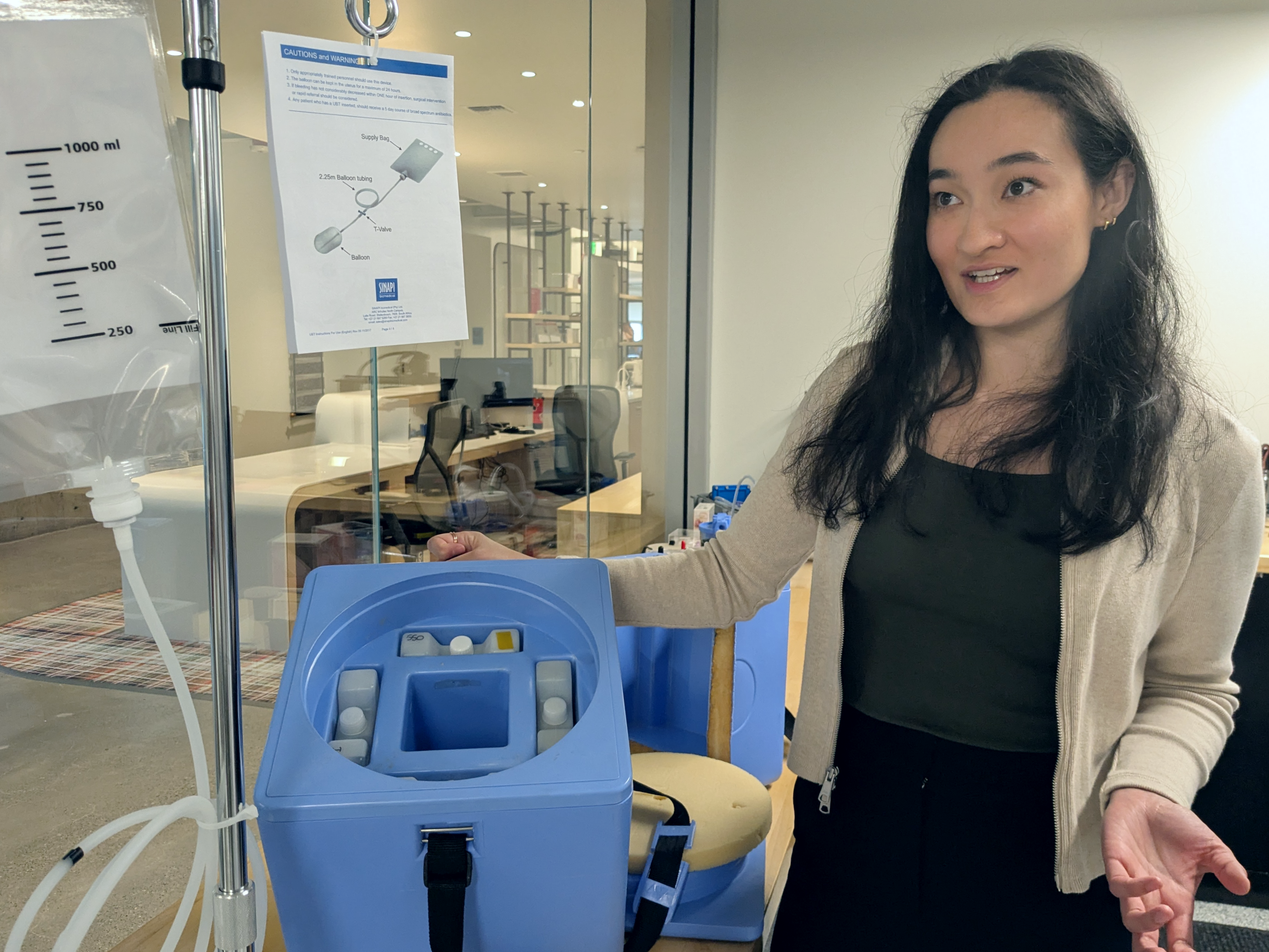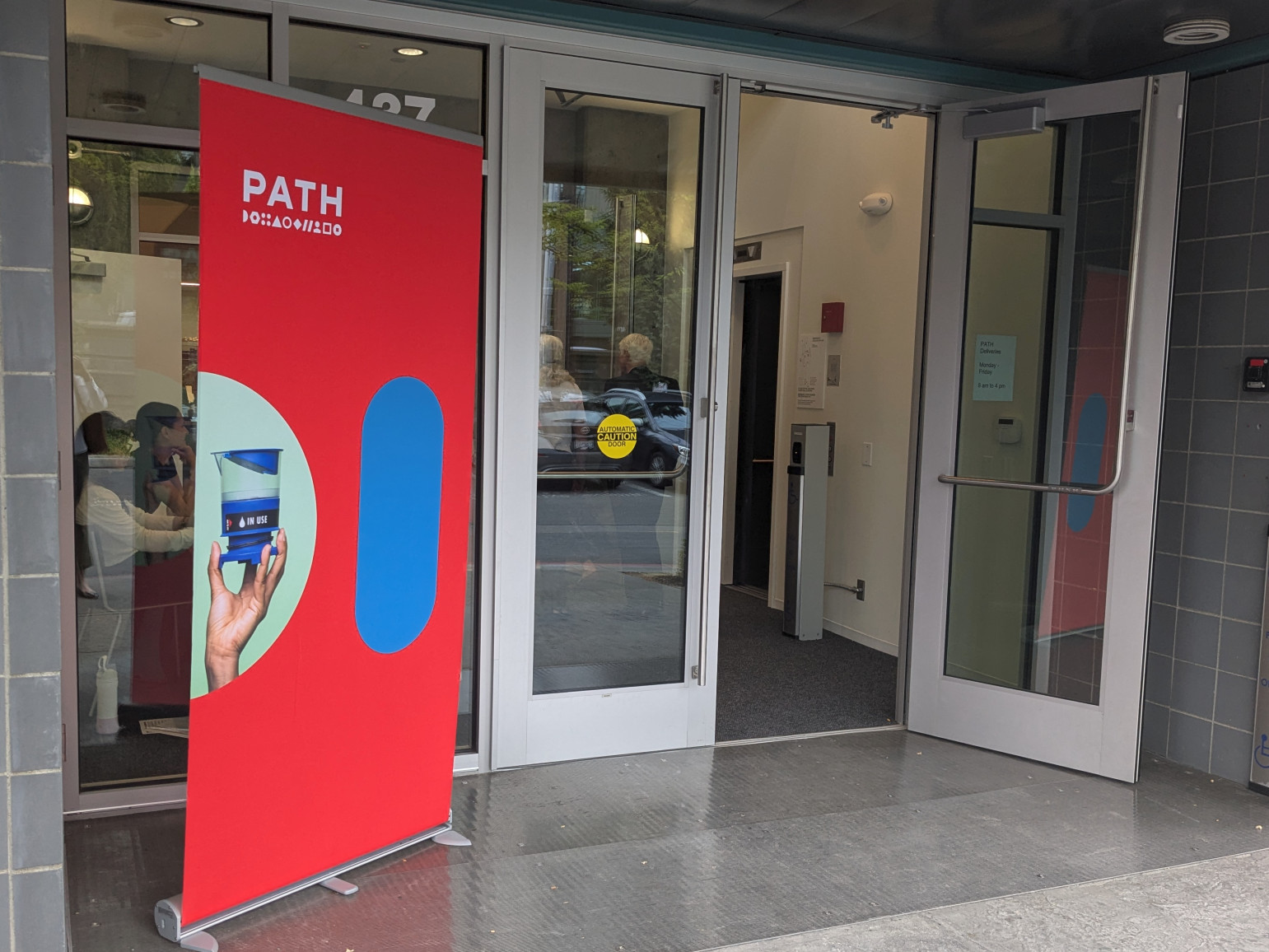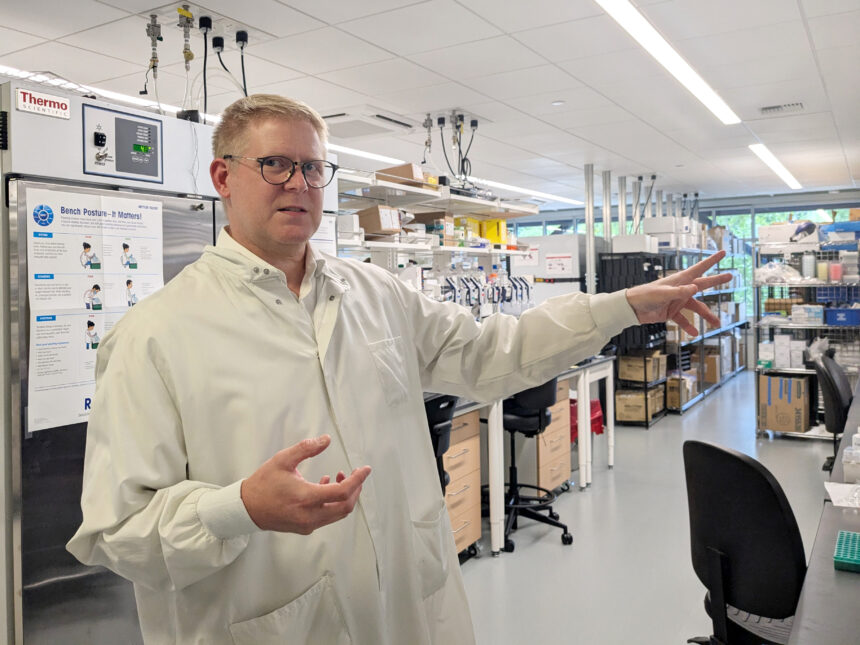PATH’s ribbon-cutting ceremony this week should have been purely celebratory. Instead, the global health nonprofit’s move to airy new Seattle offices overlooking a tree-lined ship canal came as the venerable institution is finding its footing after six months of unprecedented turmoil.
On the first day of his second term, President Trump froze all foreign aid. A week later, he began dismantling the U.S. Agency for International Development (USAID) — a move that could lead to 14 million additional deaths worldwide by the end of this decade, according to new research.
The U.S. government has canceled awards to the organization and stalled on payments. PATH laid off roughly 45% of its global workforce, shrinking its current headcount to 1,700.
“We will go on,” Nikolaj Gilbert, president and CEO of PATH, told GeekWire. “We will go on strong because the needs are still there, they haven’t disappeared. So it’s for us to challenge ourselves to see how can we continue to have even more impact with less resources.”
PATH occupies a unique space in the global health sphere, doing research and testing to develop life-saving vaccines, diagnostics and medical supplies, as well as providing support for effective healthcare systems — all targeting low- and middle-income countries worldwide.
It partners closely with foreign health ministries, philanthropies including the Gates Foundation, and major pharmaceutical and other companies to deliver on a mission that began nearly 50 years ago.
Navigating the aftermath
The nonprofit is charting its course from the new headquarters as staff navigate the aftermath of Trump administration cuts, with the final scope of reductions still unknown.
Gilbert last month shared that the nonprofit had awards for 53 U.S.-funded projects at the start of the year. By the end of May, 28 were active and 23 had been terminated; the organization did not provide an updated status. PATH expects funding from U.S. government awards to comprise 18% of its total revenue this year, down from 36% last year. The Gates Foundation remains its largest funder.
Since its launch in 1977 as the Program for Appropriate Technology in Health, PATH has led and collaborated on innovations that have benefited millions of impoverished people, including:
- Designing a cooler for transporting vaccines that prevents them from freezing, which can damage their potency.
- Helping develop the world’s first malaria vaccine, which was also the first to target a parasite.
- Partnering with the World Health Organization to develop a groundbreaking, affordable meningitis vaccine addressing disease outbreaks in Africa.
- Devising single-use injection devices to reduce disease spread, such as auto-disabling syringes and pre-filled, single-dose vaccines that can include powdered, shelf-stable vaccines.
- Developing microarray patches for delivering vaccines or drugs via band aid-like applications.
Beyond developing critical technologies, PATH works to ensure products remain affordable, reduce waste in healthcare supplies, and build local supply chains for drugs and diagnostic testing.
The nonprofit is also building its artificial intelligence capabilities, hiring Bilal Mateen as its first chief AI officer nearly a year ago. PATH’s AI initiatives include accelerating drug and diagnostic development and engineering an assistant to guide healthcare providers treating patients in remote areas.

Innovation continues despite constraints
PATH operates in 70 countries through dozens of offices worldwide. More than a year ago, the organization recognized an opportunity to downsize its Seattle base as employees shifted to hybrid work following the COVID pandemic. The move from South Lake Union to Fremont cut its footprint nearly in half, from 113,000 to 52,000 square feet.
But the March relocation to former Google offices wasn’t just about saving space. PATH expanded its specialized lab facilities for vaccine and disease work by 20%, bringing the wet-lab area to 6,000 square feet with capacity for about 20 scientists.
On a recent tour of the facility, Roger Peck, PATH’s associate director of diagnostics, pointed out the wide range of scientific devices and the modular design of the infrastructure that allows for easy reconfiguration as the field evolves.
“What differentiates us is the type of work that we do here and the variety of work,” Peck said. That includes research in immunology, molecular diagnostic tests, vaccine formulations and other initiatives.
The other side of the building is occupied by PATH’s Product Development Engineering Lab, which feels like a makerspace and includes 3D printers, life-sized baby dolls for testing devices meant for infants and children, fabricating technologies and refrigerating systems.
“This is a really special facility because we have the capability to do complete in-house, end-to-end medical device development,” said Clara Orndorff, a global health design engineer. “So we can do everything from prototyping to building, regulated testing to redesign, and technology transfer. In many places that would require you go to four or five different contractors.”

Building for the future
The remainder of PATH’s headquarters features glass-windowed conference rooms, a spacious kitchen area that flows into an event space, offices and desks, and a casual meeting area with comfy chairs and books. Large, multimedia artwork from around the world brightens the walls and hallways.
On the day of the ribbon-cutting, PATH leaders struck a tone of optimism, noting that the challenges present an opportunity for change.
“The fragility of this sector is something we could not have imagined before January of this year,” Kammerle Schneider, chief of Global Health Programs at PATH, told GeekWire.
The realization has spurred PATH to accelerate long-discussed plans for creating more sustainable healthcare ecosystems and shifting the ownership of solutions to local communities.
“It’s a time,” Schneider said, “of being much more bold than perhaps we’ve been in the past.”
Continue scrolling for additional photos.



Read the full article here










